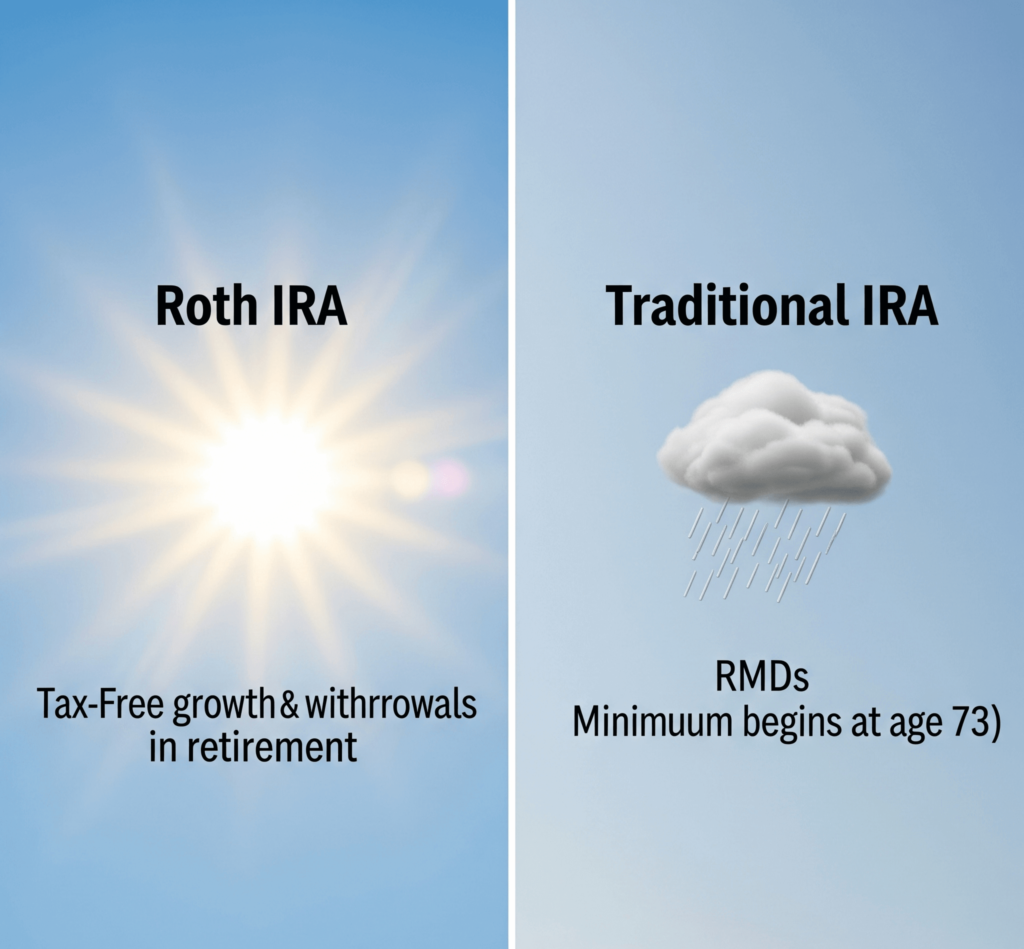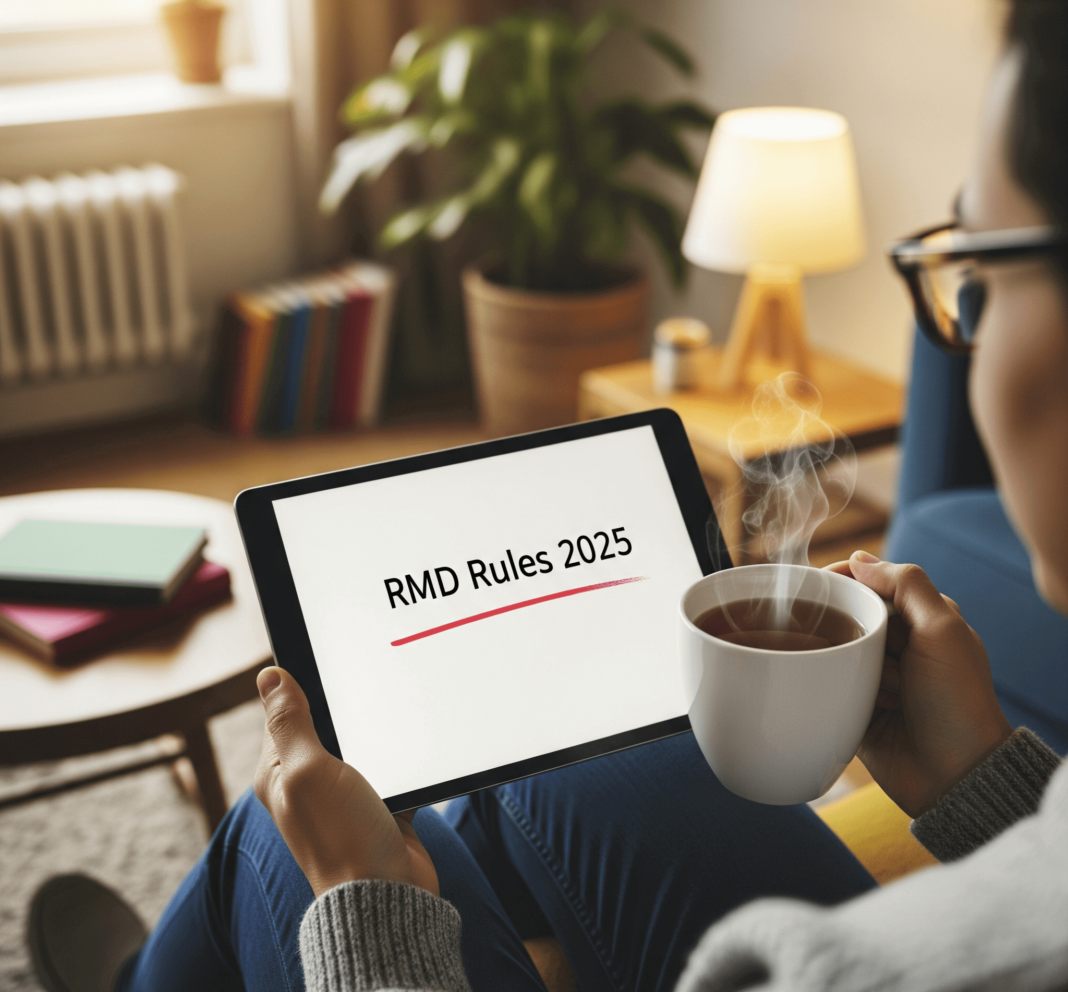So retirement RMD Rules. Sounds pretty sweet, right? Sleeping in, finally getting around to that hobby you’ve been putting off for decades (mine’s learning to play the ukulele, wish me luck), and just generally kicking back. But then… then you start hearing whispers. Cryptic phrases like “required minimum distributions” and the dreaded acronym “RMDs.” And suddenly, that blissful image of endless leisure gets a little… cloudy.
Honestly, when I first heard about RMD rules, my brain did that classic cartoon thing where gears start grinding and then just kind of explode into question marks. It sounded super official and complicated, like some kind of secret handshake you had to learn to avoid financial penalties. And the idea of having to take money out of my retirement accounts? When all I’ve been doing is diligently (mostly) trying to put money in for all these years?
It reminds me of that time I finally got my Tamagotchi to adulthood, only for it to… well, you know. It felt like I’d done all this work, and then the rules suddenly changed. (Anyone else remember the heartbreak of a digital pet passing away? No? Just me? Okay, moving on.)
Anyway, the point is, RMDs can feel a bit daunting. But just like figuring out how to program the VCR back in the day (remember those?), it’s not impossible. And that’s why I’m here today – to be your friendly guide through the RMD rules in 2025, without all the jargon and stuffy explanations. Think of it as chatting over a cup of chai (since I’m writing this with a lovely view of Jaipur!).

So, What the Heck ARE These RMDs Anyway?
Alright, let’s get down to brass tacks. Required Minimum Distributions (RMDs) are basically the amount of money the IRS says you have to start withdrawing each year from certain retirement accounts once you reach a certain age. Think of it as the government saying, “Okay, you’ve been saving all this money tax-deferred (or sometimes tax-free in the case of Roth, but we’ll get to that), now it’s time to start paying some taxes or using that money.”
These rules generally apply to:
- Traditional IRAs: The ones where you get a tax break upfront.
- Traditional 401(k)s: Your employer-sponsored plan (unless you’re still working past the RMD age).
- SEP IRAs and SIMPLE IRAs: Retirement plans for the self-employed and small businesses.
- 403(b)s and 457(b)s: Retirement plans for employees of certain non-profit organizations and state/local governments.
The big question, of course, is… when do you have to start taking these darn things? This is where things have actually gotten a little more relaxed recently, which is a nice surprise, like finding an unexpected ₹500 note in an old wallet.
The Age Factor: It Keeps Changing!
For a long time, the age you had to start taking RMDs was 70 ½. Then, the SECURE Act of 2019 bumped it up to 72. And guess what? The SECURE 2.0 Act of 2022 is pushing it even further!
- For 2023 and 2024: The starting age is 73.
- For 2025: Here’s the key bit for our chat today – the starting age for RMDs becomes 75!
Yes, you read that right. If you turn 75 in 2025 or later, you won’t have to start taking RMDs until that year. This is a pretty significant change and gives retirees a bit more flexibility in when they access their retirement funds. It’s like getting a few extra years to decide what color to paint your retirement bungalow.
Now, there’s always a catch, right? This new rule applies if you were born in 1960 or later. If you were born before 1960, the old rules might still apply (you probably started taking RMDs already if you were born way before then). It’s a little like trying to figure out which Bollywood movie songs are actually remakes of older ones – it can get confusing!
How Much Do You Actually Have to Take Out? (The Math Part – Deep Breaths!)
Okay, this is where a little bit of math comes in, but don’t run away screaming! It’s not calculus, I promise. The IRS uses something called a life expectancy table to figure out how much you need to withdraw each year.
Basically, they look at your age and estimate how much longer you’re expected to live. Then, they divide your total retirement account balance by a factor from that table. That gives you your RMD for the year.
The older you get, the shorter your life expectancy is deemed to be (no surprises there!), and the larger the percentage you’ll need to withdraw each year.
For example (and these are just rough numbers, so don’t quote me exactly!), if you’re 75, the factor might be around 27.4. So, if you have $100,000 in your traditional IRA, your RMD for that year would be roughly $100,000 / 27.4 = $3,649.64.
You don’t have to take this exact amount all at once. You can take it in installments throughout the year if that works better for you. But you do need to withdraw at least that total amount by the end of the year (usually by December 31st).
What Happens if You Don’t Take Your RMD? (Spoiler Alert: It’s Not Good)
This is the part where the IRS gets a little less friendly. If you don’t take out your required minimum distribution by the deadline, you could face a hefty penalty. We’re talking a whopping 25% excise tax on the amount you should have taken out but didn’t. Ouch! That’s like getting charged extra for forgetting to return a library book, but on a much, much larger scale.
The SECURE 2.0 Act actually reduced this penalty from 50% (which was just brutal!), starting in 2023. So, while 25% is still a significant chunk of change, it’s at least a step in the right direction.
The good news is that if you have a reasonable cause for missing your RMD, the IRS might waive the penalty. But you’ll have to explain the situation and take the withdrawal as soon as possible. It’s better to just avoid the headache altogether and make sure you take your RMD on time.

Roth Accounts: The (Mostly) Exempt Ones
Now for some potentially good news, especially if you’ve been diligently saving in a Roth IRA. Roth IRAs generally do not have required minimum distributions for the original owner. Yes, you heard that right! You can let that money continue to grow tax-free for as long as you live. It’s like having a financial oasis where the RMD rules don’t apply.
However, there’s a catch (there’s always a catch, isn’t there?). If you inherit a Roth IRA, then RMD rules do apply to the beneficiary. But for your own Roth IRA, you’re generally in the clear.
The rules for Roth 401(k)s are a little different. While you are still working, you typically don’t have to take RMDs from your Roth 401(k). However, once you retire, RMDs generally do apply to Roth 401(k)s (though some plans might allow you to roll it over into a Roth IRA to avoid RMDs). It’s a bit of a confusing landscape, so definitely check with your plan administrator.
Planning Ahead: Don’t Let RMDs Be a Surprise
The key to dealing with RMDs is to plan ahead. Don’t wait until December to figure out how much you need to withdraw. Here are a few things to consider:
- Know Your Age: Keep track of when you’ll hit that RMD age (currently 75 in 2025 if you were born in 1960 or later).
- Estimate Your RMD: Get a rough idea of how much you’ll need to take out each year based on your account balances and the IRS life expectancy tables (you can usually find these online or your financial institution can help).
- Consider Your Tax Situation: Remember that withdrawals from traditional retirement accounts are taxed as ordinary income. So, taking a large RMD could potentially bump you into a higher tax bracket. You might want to consider strategies like taking smaller withdrawals throughout the year or exploring Roth conversions before RMDs kick in (though that’s a whole other conversation!).
- Coordinate Multiple Accounts: If you have several traditional IRAs or 401(k)s, you generally need to calculate the RMD for each account. However, you can then choose to withdraw the total RMD amount from just one or more of those accounts (with some exceptions for inherited accounts). This can give you some flexibility in where you pull the money from.

My Totally Unofficial (But Hopefully Helpful) Advice
Look, retirement should be a time to relax and enjoy the fruits of your labor (and saving!). Don’t let the RMD rules stress you out. Here’s my take:
- Mark Your Calendar: Seriously, make a note of the year you’ll need to start taking RMDs. It’s one less thing to have to remember off the top of your head.
- Don’t Be Afraid to Ask for Help: Your financial advisor or the folks at your brokerage firm can be really helpful in understanding your specific RMD requirements and planning accordingly. That’s what they’re there for! It’s like asking for directions when you’re lost – sometimes it’s the smartest thing you can do.
- Think About Your Goals: How do you plan to use your retirement savings? Understanding your spending needs can help you figure out the best way to manage your RMDs. Maybe you’ll use it for travel, maybe for those ukulele lessons I mentioned, or maybe just to have a comfortable cushion.
- Stay Informed: The rules around retirement accounts can change, so it’s a good idea to keep an eye on any updates from the IRS or financial news outlets. You don’t have to become an expert, but just staying generally aware can save you headaches down the road.
So, there you have it. My attempt to demystify the RMD rules in 2025. It’s not the most thrilling topic, I’ll admit, but it’s definitely something retirees (and soon-to-be retirees) need to be aware of. Hopefully, this has helped clear up some of the confusion. Now, if you’ll excuse me, I think it’s time for that second cup of chai. And maybe I’ll even strum a few chords on that ukulele… badly, but enthusiastically!
Outbound Link Suggestion:
- For the official word on RMDs, you can always check out the IRS website: [insert relevant IRS RMD page link here].
- AARP also has some helpful articles on RMDs in plain English: [insert relevant AARP RMD article link here].





